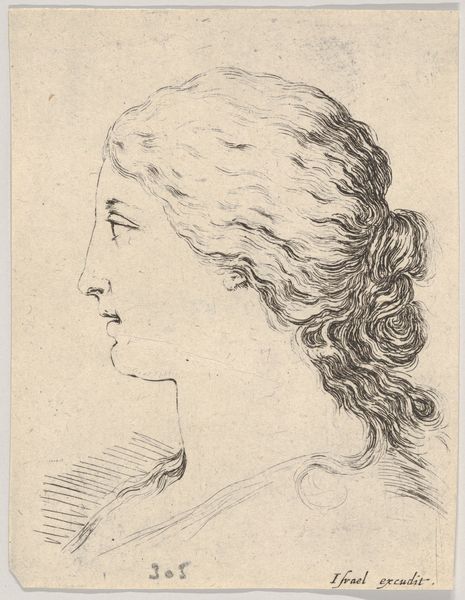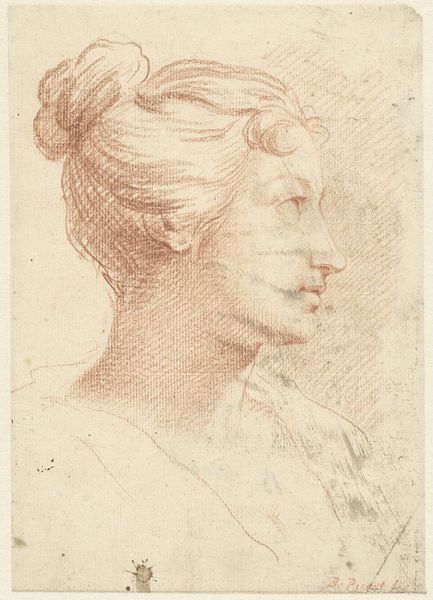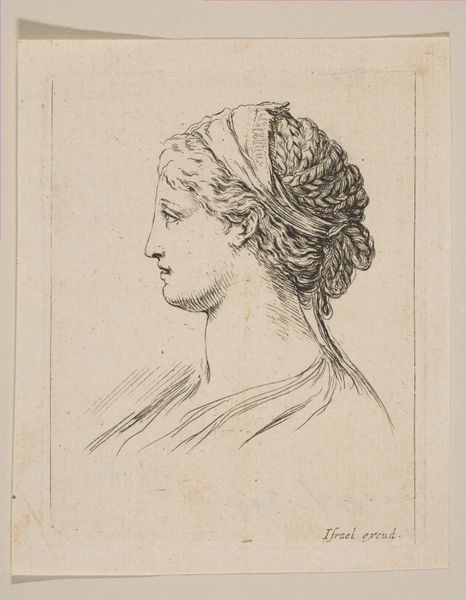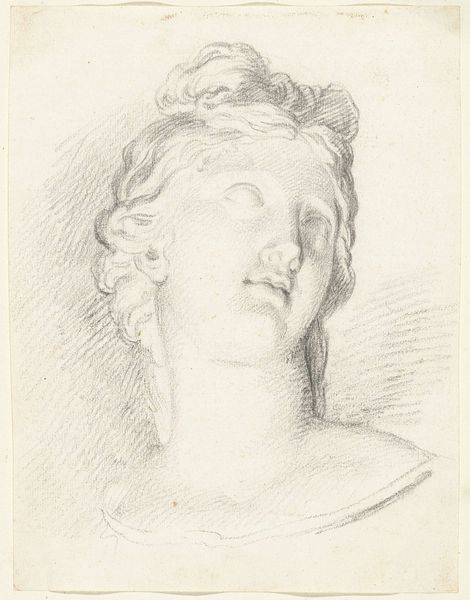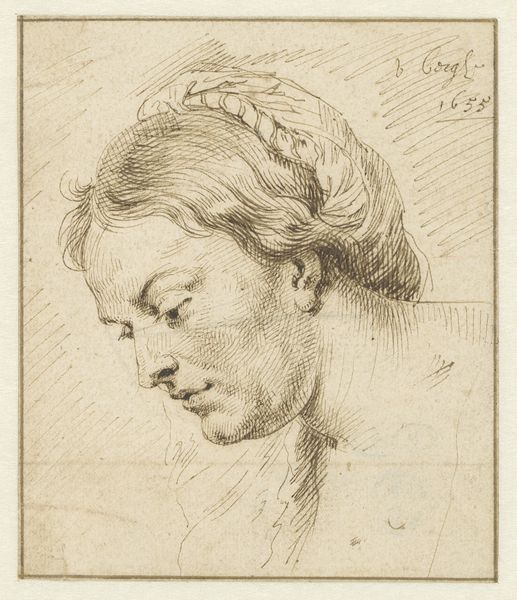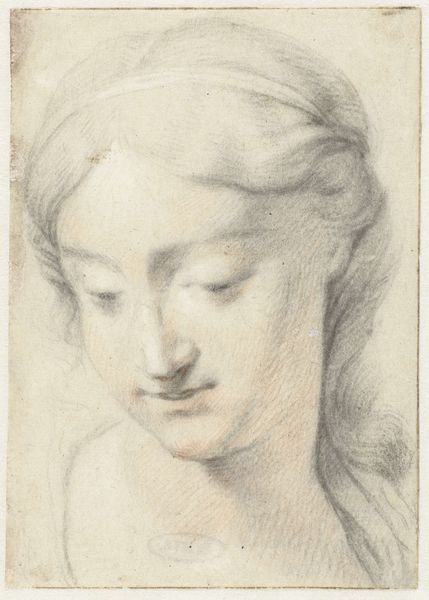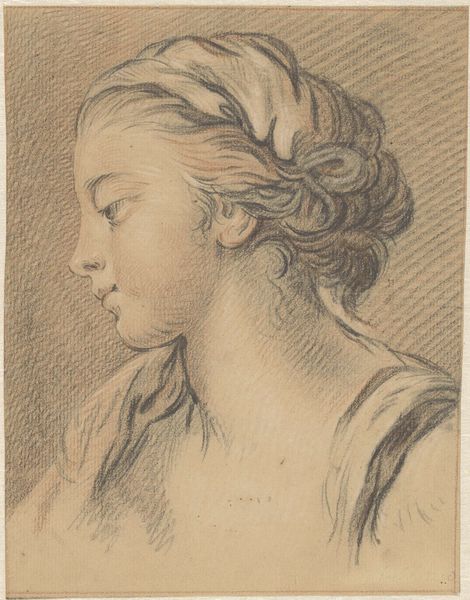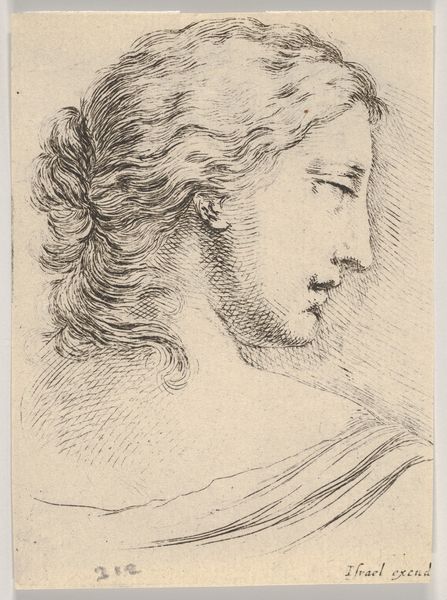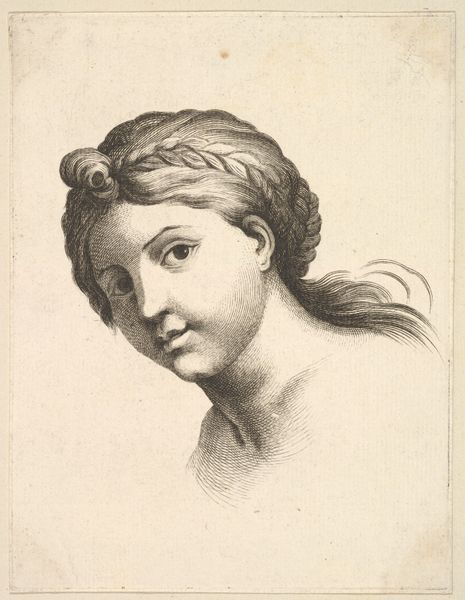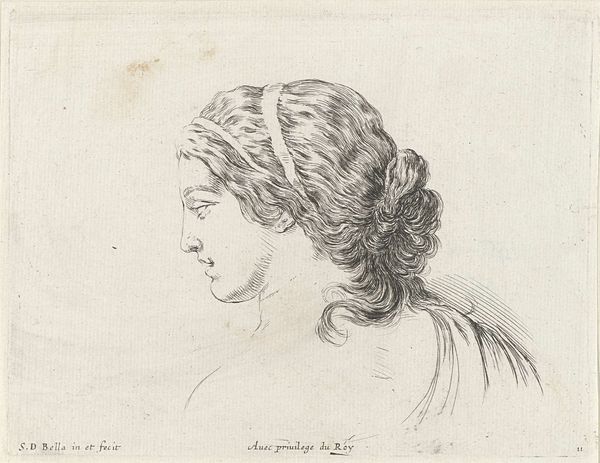
drawing, intaglio
#
portrait
#
drawing
#
baroque
#
intaglio
#
figuration
#
line
#
portrait drawing
Dimensions: height 85 mm, width 65 mm
Copyright: Rijks Museum: Open Domain
Curator: Here we have "Head of a Woman with Closed Eyes," a baroque-era intaglio drawing from between 1620 and 1647, attributed to Stefano della Bella and held in the collection of the Rijksmuseum. Editor: There's such serenity here. The simple lines and shading are effective, and she seems so composed and still. Curator: Indeed. Let us observe the masterful handling of line, its varied weight and density used to model form and create light and shadow. Note especially how cross-hatching describes the contours of her face, delineating its gentle curvature. The eyes being closed emphasizes not a void of perception, but rather inwardness, introspection. Editor: And it’s intriguing to think about what it meant to portray a woman in this almost reverential sleep-like state, especially in this historical context. Who was she? A noblewoman, a model? What purpose did her image serve, beyond simply artistic exercise? The relative anonymity is suggestive; could this be an every-woman of the period idealized, an exploration of feminine repose removed from her traditional social functions? Curator: A compelling point. But notice the precise control of the burin, the engraving tool used for intaglio. Bella was renowned for his prints, celebrated for his facility. Here he evokes softness and sensitivity of line that belie the medium’s inherent rigidity. I would argue we are meant to study and appreciate Bella's technique, this demonstration of his expert draughtsmanship more so than delve into deeper readings of social import. Editor: Perhaps. However, Baroque art served multifaceted functions. Was it intended as a display piece to highlight the virtues of contemplation for the wealthy, fostering admiration, or even yearning, among its viewers? It has a power far greater than mere skillful rendering can achieve. Curator: I acknowledge the cultural dimensions; however, the artist's deliberate and sophisticated compositional elements merit significant attention on their own accord. Editor: Agreed. Looking again with fresh eyes I appreciate this, but its societal implications should not be discarded so swiftly. Curator: A fruitful discussion! The confluence of form, historical context, and symbolism in works such as this offers continuous possibilities for study. Editor: A perfect marriage of line and historical enquiry. It provides much more richness for visitors to consider than just beautiful lines!
Comments
No comments
Be the first to comment and join the conversation on the ultimate creative platform.

